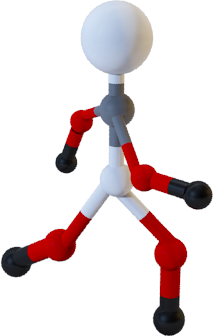The Operational Model

The OPERATIONAL MODEL is a process engineering compendium that has been developed by Alexis Yovanovic since 1987 for several mineral processing mechanical operations. It is established an analogy with chemical processes creating a new phenomenological interpretation for the Comminution and Concentration with Mineral Particles Transfer. The Operational Model defines how mineral particles would behave if they were molecules, always guiding them along the shortest path, just like the GPS for a driver.
In 2004 the first book of the engineering series on the Operational Model was published: “Engenharia da Concentração de Massa por Flotação”, Volume 1: Fundamentos da Flotação” (“Mass Concentration Engineering by Flotation, Volume 1: Fundamentals of Flotation“) – ISBN-85-904718-1-0, which is being distributed in several academic and scientific circles in general, mainly in Brazil and Chile. In 2006 the second book was published: “Engenharia da Cominuição e Moagem em Moinhos Tubulares” (“Engineering of Comminution and Grinding in Tubular Mills“) – ISBN-85-904718-2-9. From 2006 on, the Operational Model goes also towards the final development of advanced optimizing control systems for several mineral beneficiation processes.
From 2007 on, MOPE begins to use the SELECTIVE CONCENTRATION as the foundation for its metallurgical research, process route development, and for the optimization of industrial operations. These last ones are strongly enriched with analyses of rearrangement alternatives, which seek the greatest opportunities for gains after optimization. SELECTIVE CONCENTRATION is an original technique of great practical sense. It is where all the concepts developed by MOPE along these years come together, always guiding toward the best process route, minimum CAPEX and OPEX, and minimum generation of fine rejects.
Click below to download a free version of MOPETOOLS, the simulation and calculation tool used by MOPE.